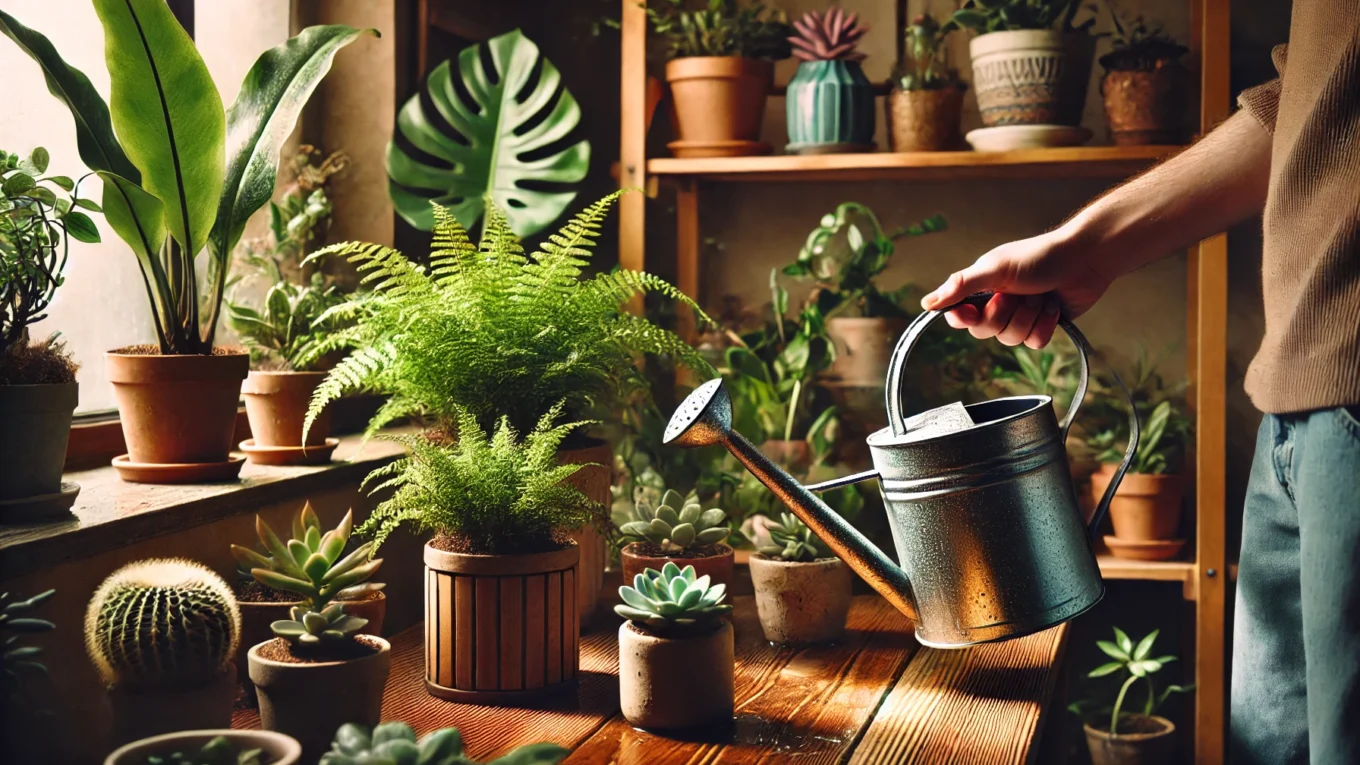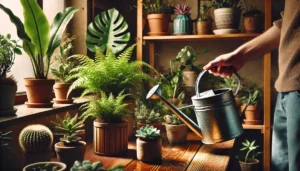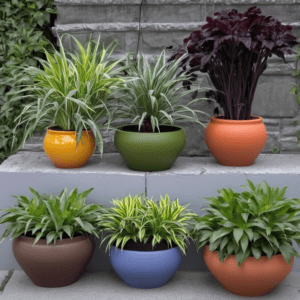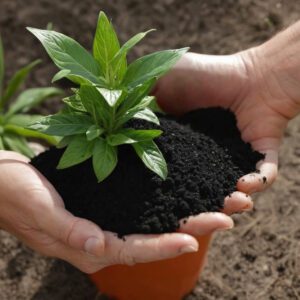How to Water Your Plants Correctly: Frequency and Ideal Amount
Watering is one of the most important aspects of plant care, yet it’s also where many people make mistakes. Too much water can cause root rot, while too little can leave your plant dehydrated and weak. Understanding how, when, and how much to water will keep your plants healthy and thriving.
In this guide, we’ll cover how to determine the right watering schedule, signs of overwatering and underwatering, and best practices for watering different types of plants.
1. Why Proper Watering is Essential for Plant Health
Water plays a vital role in plant growth because it:
✅ Transports nutrients from the soil to the plant.
✅ Keeps leaves firm and prevents wilting.
✅ Helps with photosynthesis.
✅ Regulates plant temperature through transpiration.
Without proper watering, plants struggle to absorb nutrients, their growth slows down, and they become more prone to disease.
2. How Often Should You Water Your Plants?
There’s no one-size-fits-all rule for watering because different plants have different needs. However, here’s a general guide based on plant type:
🌿 Houseplants:
- Most common houseplants (pothos, snake plants, monstera): Once a week.
- Tropical plants (ferns, calatheas, peace lilies): Every 3-4 days.
- Succulents & cacti: Once every 2-3 weeks.
- Flowering houseplants: Every 3-5 days during blooming season.
🌻 Outdoor Plants:
- Vegetables and herbs: 3-4 times per week in warm weather.
- Flowers in pots: Every 1-2 days in summer.
- Established garden plants: Once a week with deep watering.
🌱 Seedlings & New Plants:
- Water daily until they develop strong roots.
⏳ Pro tip: Watering frequency also depends on seasons—plants need less water in winter and more in summer.
3. How to Know When Your Plant Needs Water
Instead of following a strict schedule, it’s best to check the soil to determine if your plant needs water. Here are some easy methods:
✔ Finger test: Insert your finger 1 inch (2-3 cm) into the soil. If it feels dry, it’s time to water.
✔ Lift the pot: If the pot feels too light, the soil is likely dry.
✔ Look at the leaves:
- Wilting, dry, or curling leaves → Needs more water.
- Yellow, mushy leaves → Too much water.
4. How Much Water Should You Use?
Using the right amount of water is as important as watering at the right time. Here’s how to do it properly:
For Potted Plants
💦 Water until you see excess water draining from the bottom of the pot. This ensures that the roots are properly hydrated. If no water drains, you may not be watering enough.
For Outdoor Plants
🌿 Instead of watering lightly every day, it’s better to water deeply once or twice a week. This encourages deep root growth, making plants more drought-resistant.
🚫 Avoid shallow watering—it leads to weak, surface-level roots that dry out quickly.
5. Best Watering Methods for Different Plants
Different plants have different watering needs. Here’s how to water them correctly:
💧 Tropical Plants (Ferns, Monsteras, Philodendrons)
- Keep soil consistently moist but not soggy.
- Mist leaves occasionally to increase humidity.
🌵 Succulents & Cacti
- Use the soak and dry method—water deeply and then let the soil dry out completely before watering again.
- Never let water sit in the center of rosette-shaped succulents.
🌾 Herbs & Vegetables
- Water early in the morning to prevent evaporation.
- Keep soil evenly moist, especially during hot weather.
🌺 Flowering Plants
- Water at the base rather than on the leaves to prevent fungal diseases.
- Increase watering when buds appear and during blooming.
6. The Best Time of Day to Water Plants
🕗 Morning (best time!) – Watering in the morning allows the plant to absorb moisture before the sun gets too strong.
🌅 Evening (second best option) – Watering in the evening prevents rapid evaporation but may cause fungal issues if the soil stays wet overnight.
☀️ Avoid watering in the afternoon – Water evaporates too quickly in the heat, making it less effective.
7. Common Watering Mistakes to Avoid
🚨 Overwatering:
- Symptoms: Yellowing leaves, root rot, moldy soil.
- Solution: Let the soil dry before watering again and use pots with drainage holes.
🚨 Underwatering:
- Symptoms: Wilting, brown leaf edges, slow growth.
- Solution: Water more frequently and check soil moisture regularly.
🚨 Watering with hard or cold water:
- Some plants are sensitive to chlorine, fluoride, or cold temperatures.
- Solution: Use filtered water or let tap water sit for 24 hours before using it.
🚨 Watering only the surface of the soil:
- Causes weak, shallow roots.
- Solution: Water deeply so moisture reaches the roots.
8. Special Watering Tips for Indoor Plants
🌿 Use a self-watering pot if you forget to water often.
🌱 Group plants together to increase humidity naturally.
💧 Place a humidity tray under tropical plants to keep them happy.
Final Thoughts: Mastering the Art of Watering
Watering is simple, yet it’s the most common reason plants struggle. By learning when, how often, and how much to water, you can create a perfect routine for your plants.
🌿 Key takeaways:
✔ Check soil moisture before watering.
✔ Water in the morning for best results.
✔ Adjust watering based on plant type and season.
✔ Avoid overwatering and underwatering by observing your plant’s leaves.
Now that you know how to water your plants correctly, they’ll stay healthy, green, and thriving! 🌱








